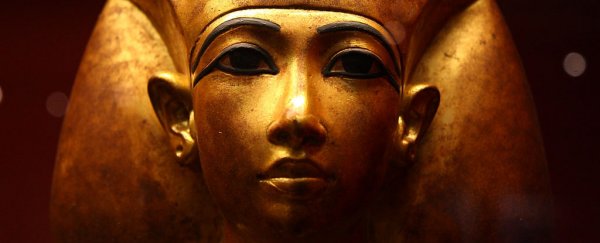For the first time since its discovery in 1996, the tomb of King Tutankhamun's wet nurse, Maia, has been opened to the public, and the event coincides with new claims that could prove a major revelation about the young pharaoh's inner circle.
According to Alain Zivie, the French archaeologist who discovered Maia's tomb almost 20 years ago, King Tut's wet nurse was also his sister, Meritaten.
"Maia is none other than princess Meritaten, the sister or half-sister of Tutankhamun and the daughter of [Pharaoh] Akhenaten and [Queen] Nefertiti," Zivie told reporters on the weekend.
The Egyptologist bases his claim on markings within Maia's tomb in Saqqara, a mass burial ground south of Cairo. Zivie says carvings depicting Tutankhamun and Maia in the wet nurse's tomb reveal a family resemblance between the pair.
"The extraordinary thing is that they are very similar. They have the same chin, the eyes, the family traits," Zivie said. "The carvings show Maia sitting on the royal throne and he is sitting on her [lap]."
The tomb of Akhenaten – who was proven in 2010 by DNA analysis to be the father of Tutankhamun – in Amarna has similar markings also.
"In these scenes there is a woman who is breast-feeding a baby, and this woman shown as a wet nurse is princess Meritaten, the eldest daughter of Akhenaten," said Zivie.
While Meritaten's mummified remains have not yet been found, Egypt's Antiquities Minister Mamduh al-Damati said over the weekend that it's possible her body could be located in secret chambers that have recently been discovered in Tutankhamun's tomb. One of these is hypothesised to be the resting place of Queen Nefertiti, Tutankhamun's stepmother.
Damati has previously cast doubt on the notion that those secret chambers will actually reveal Nefertiti's mummy, but he acknowledges that the possibility can't be discounted altogether, and further examination may well reveal more secrets about the famous pharaoh's family.
"All these possibilities exist," Damati said. "Step by step we will be able to better understand the time of king Tutankhamun."
Archaeologists are still scanning Tutankhamun's tomb for more evidence of what (and who) lies where, so hopefully we'll know more soon.
